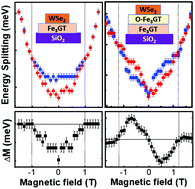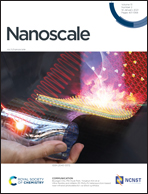Antiferromagnetic proximity coupling between semiconductor quantum emitters in WSe2 and van der Waals ferromagnets†
Abstract
van der Waals ferromagnets have gained significant interest due to their unique ability to provide magnetic response even at the level of a few monolayers. Particularly in combination with 2D semiconductors, such as the transition metal dichalcogenide WSe2, one can create heterostructures that feature unique magneto-optical response in the exciton emission through the magnetic proximity effect. Here we use 0D quantum emitters in WSe2 to probe for the ferromagnetic response in heterostructures with Fe3GT and Fe5GT ferromagnets through an all-optical read-out technique that does not require electrodes. The spectrally narrow spin-doublet of the WSe2 quantum emitters allowed to fully resolve the hysteretic magneto-response in the exciton emission, revealing the characteristic signature of both ferro- and antiferromagnetic proximity coupling that originates from the interplay among Fe3GT or Fe5GT, a thin surface oxide, and the spin doublets of the quantum emitters. Our work highlights the utility of 0D quantum emitters for probing interface magnetic dipoles in vdW heterostructures with high precision. The observed hysteretic magneto response in the exciton emission of quantum emitters adds further new degrees of freedom for spin and g-factor manipulation of quantum states.



 Please wait while we load your content...
Please wait while we load your content...